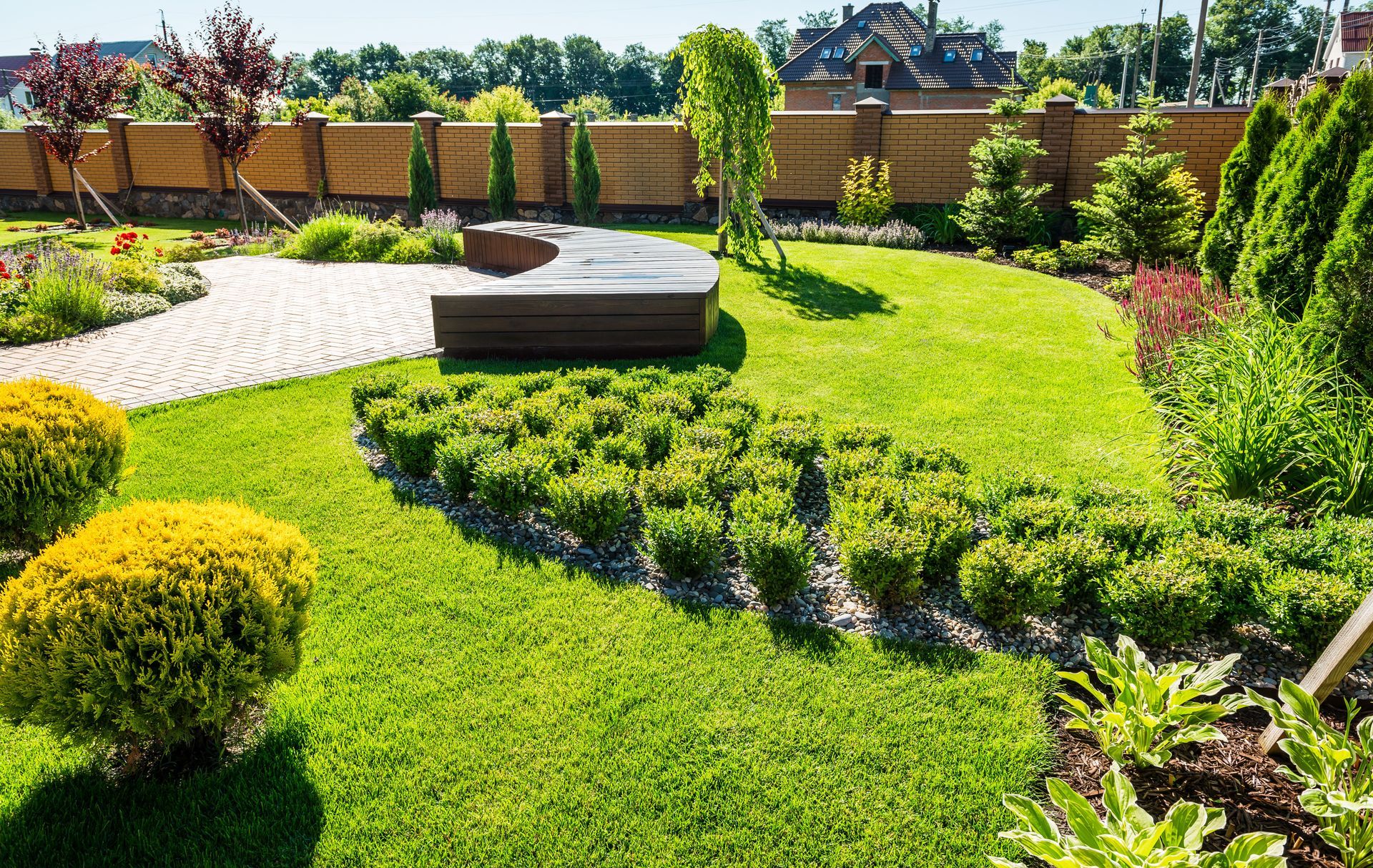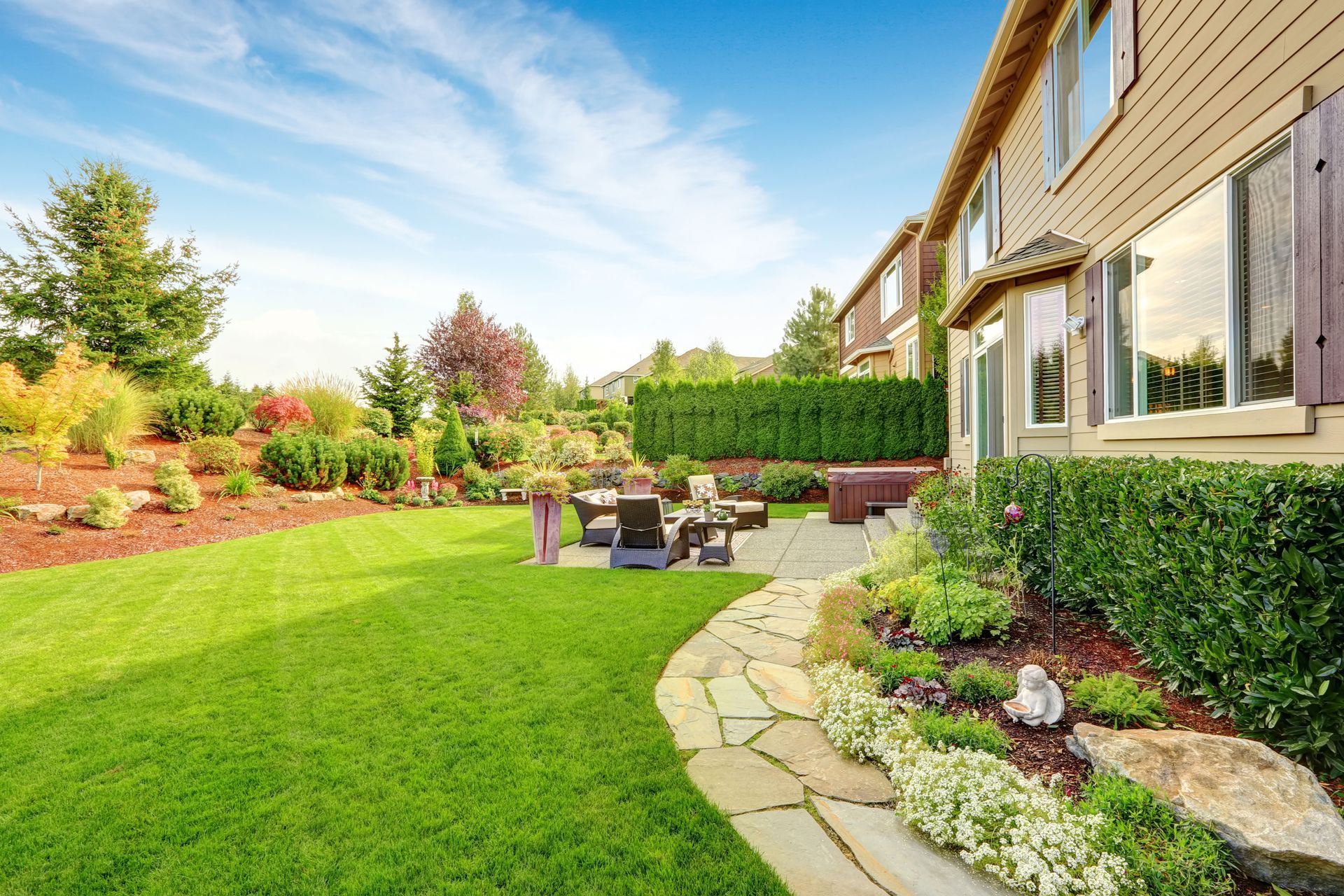Tips to Keep Your Pavers Looking Great for Years
By Mike Sencenich | September 18, 2025
Maintaining your pavers is essential for preserving their aesthetic appeal and ensuring their long-term durability. Proper maintenance involves regular cleaning, sealing, and repair, which can protect your investment and extend the life of your paver surfaces. Pavers, which offer versatile solutions for outdoor spaces, are susceptible to wear and tear from weather and foot traffic. Neglecting maintenance can lead to fading, cracking, or uneven surfaces. This guide provides comprehensive strategies to help you maintain your pavers in pristine condition, ensuring your outdoor spaces remain beautiful and safe.
Cleaning Your Pavers
Choosing the right cleaning products for your pavers is essential to ensure their durability and long-term appearance. Different paver materials react differently to various cleansers, so not every product is safe for every type. Harsh chemicals, for instance, can cause erosion or fading, damaging the surface over time. Using pH-neutral cleaners specifically formulated for your paver type protects your investment and helps you avoid costly repairs. Consulting with a professional or reviewing manufacturer recommendations can further ensure you select the safest and most effective products for your pavers.
Regular sweeping and rinsing are foundational steps in maintaining paver cleanliness. Dirt and debris accumulation can lead to surface scratches and long-term color changes. Sweeping your pavers weekly helps prevent these issues and maintains their appearance. Follow up with rinsing to remove finer particles and prevent stains. Routine maintenance is cost-effective and preserves the beauty and value of your initial paver investment. Incorporating these habits into a seasonal cleaning routine ensures your pavers remain both functional and visually appealing for years to come.
Stubborn stains such as oil, grease, and rust often require targeted treatment to effectively remove them from paver surfaces. Begin by identifying the type of stain, as each requires a different approach for optimal results. For instance, oil stains can be treated by applying an absorbent material like cat litter to soak up excess oil before rinsing, while rust stains may necessitate a specialized rust remover applied carefully to a small test area first. Addressing stains promptly not only prevents permanent discoloration but also helps preserve the appearance and longevity of your pavers, protecting your investment.
Sealing Your Pavers
Sealing pavers is a beneficial step in preserving their aesthetic and structural integrity. Sealers create a protective barrier against moisture, stains, and UV damage. This is especially important for pavers used in high traffic or domestic areas. Additionally, sealing enhances the natural colors and extends the life of your pavers. Implementing a sealing schedule can lead to long-term cost savings and reduce the need for frequent repairs.
Selecting the right sealer for your pavers depends on both the type of material and the desired finish. Penetrating sealers offer long-lasting protection while preserving the natural appearance of your pavers. In contrast, film-forming sealers provide a glossy finish but usually require more frequent maintenance. According to LawnStarter, pavers typically last between 50 and 100 years, making it essential to choose a sealer that matches your environmental conditions and intended use to maximize their longevity.
Resealing frequency depends on the climate, paver material, and sealer type used. Typically, pavers should be resealed every two to three years. Frequent inspections can help you assess sealant wear and tear, determining the best resealing intervals. Resealing not only offers continuous protection but also refreshes the visual aesthetic of your space. Maintaining this schedule is crucial for maximizing the return on your initial installation investment.
Preventing Weed Growth
Comprehending common weed species around your pavers is important for effective control. Weeds such as dandelions, clover, and crabgrass frequently colonize paver joints. These plants can cause shifting and instability, leading to premature wear. Proper identification enables targeted removal before they cause significant damage.
Choosing the right herbicide is critical to effectively managing weed growth. Non-selective herbicides eliminate all plant life they contact, ideal for treating stubborn weeds. Selective herbicides target specific weed species without damaging surrounding landscaping. Always read labels carefully to ensure compatibility with your pavers.
Regular inspection is crucial for identifying early signs of weed intrusion and paver shifting. Quick intervention prevents minor issues from escalating into significant problems requiring costly repairs. By scheduling consistent inspections, you catch developing concerns, preserving both the appearance and structure of your pavers. In expansive residential areas, this proactive approach is essential. Prompt reactions to emerging issues safeguard the longevity and beauty of your outdoor spaces.
Repairing Damages
Recognizing common problems such as cracking, chipping, and settling is the first step in addressing paver damage. These issues result from natural wear, inadequate soil preparation, or weather exposure. Early identification allows timely repair, preventing further deterioration. Consistent maintenance and monitoring ward off problems, ensuring durability. Maintaining your pavers' condition secures their aesthetic and functional purposes over time.
To repair minor cracks and chips, it's essential to clean the area thoroughly before application. Use a suitable paver repair compound, following manufacturer instructions for best results. Apply the compound evenly, ensuring a level finish with adjacent pavers. Allow ample drying and curing time before resealing the area. Addressing minor issues promptly ultimately preserves surface uniformity and eliminates the risk of worsening damages.
When repairs aren't sufficient, replacing individual damaged pavers is sometimes necessary. Begin by removing the affected paver, taking care not to disturb surrounding units. Prepare the base, ensuring it's level and compact before placing the new paver. Refill and compact the joints with appropriate sand to secure it in place. Replacement ensures both the visual and structural integrity of your paver area is maintained.
For larger-scale damage or uneven settling, professional assessment may be necessary. Experts can evaluate the underlying causes, such as drainage issues or soil instability, and recommend appropriate corrective measures. In some cases, re-leveling the entire area or improving the base material may be required to prevent recurring problems. Consulting a professional ensures repairs are durable and your paver installation maintains both its functionality and appearance over time.
Enhancing Aesthetic Appeal
Add decorative elements to elevate your paver installations and expand their visual appeal. Garden statues, planters, and water features can seamlessly integrate with paver areas. Use decorative stones or tiles to create borders, enhancing visual distinction and style. When interwoven with your paver layout, these elements transform functionality into artistry. Personalizing your paver space adds uniqueness and character, fulfilling practical and aesthetic objectives.
Artful balance between functionality and design entails careful planning and creative vision. Selecting versatile paver layouts that accommodate varying activities, from pathways to patios, promotes spatial cohesion. Ensure your design remains adaptive to lifestyle needs while integrating cohesive elements. Thoughtful designs bridge the intersection of utility and attractiveness in outdoor spaces. Cultivating this synergy bolsters both the usability and charm of your paver installations.
Creative paver arrangements breathe life into outdoor spaces, accentuating perspectives and flow. Opt for directional or various pattern configurations to emphasize unique visual dynamics. Circular or diagonal layouts can create focal points, drawing attention to specific areas. Harmonizing patterned arrangement with adjacent landscape features ensures continuity. Visually impactful arrangements enhance the interaction between functionality and elegance, elevating outdoor experiences.
Regular maintenance of pavers is imperative to ensure long-term performance and attractiveness. Proactive cleaning, sealing, repairing, and seasonal adjustment measures allow paver installations to endure the test of time. Cultivating enduring quality in outdoor spaces transforms them into valuable and cherished home features. If you need paver repair or other landscaping services, contact Classic Landscape & Horticulture.





Share On: